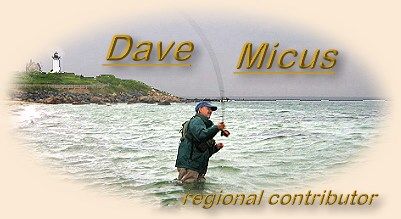|
Sharing a vise with your child can be a pretty good thing
One Christmas, when my boys were 7 and 9, I
bought them their first fly rod outfits and,
as an afterthought, put together a fly tying
kit for each of them. I was a bit leery at
first, thinking that they were a little too
young to learn the necessary vocabulary to
express the frustration when the wings on the
size 20 PDM just won't comply. But they were
eager to learn the sport, and I figured that
baptism by total immersion was not such a bad
idea.
We've tied quite a few flies in the years since,
and I've been very impressed with how quickly they
learned the skill. Sure we had some rough spots
initially, and I often had to steer them away from
the more elaborate patterns in the Orvis guide.
But early on in their fly-fishing careers they
experienced the satisfaction of catching fish on
flies that they tied themselves, and it is still
something that we share.
Following are a few pointers for anyone thinking of
teaching their kids to tie. Forgive me if any of
them fall into the 'duh' category; sometimes it's
easy to miss the obvious until it's too late (like
realizing it's best to tie over a non-carpeted floor
when you're on your hands and knees, searching for
a size 14 dry fly hook in a deep piled carpet).
TOOLS
If you've been tying for a while, you probably
have enough tools to get your kids started. I
had two small vises that came with fly tying kits
that I received as Christmas gifts, and while my
skills had outgrown both of these vises, they were
fine for my kids (plus it kept them away from the
Renzetti). If you don't have extra tools, and
you're only teaching one child to tie, you can
just let him/her use your tools. You'll be there
the whole time so you can keep an eye on your
precious vise, and you won't be tying yourself,
so why not?
But if you've never learned to share, or you're
teaching more than one child to tie and you don't
have spare tools, you'll have to make a purchase.
There's three ways to go here; cheap, moderate and
expensive. All three have advantages.
CHEAP
You can buy cheap fly tying kits in the $35 range.
It's almost blasphemous to suggest this, and you'll
cringe when you see the quality (or lack of) of the
tools and materials, but it's not as bad of an idea
as you might think. Remember the $300 snowboard
that's been in the closet for two years now, the $60
video game that's been played twice, and the various
and sundry other things the little nipper had to have
but have not been touched in years? Add it up and it
would pay for that 8-foot-5-weight Garrison you dream
of. Buying cheap tools is a way of hedging your bet.
If you child does take to tying, the kit will have
all of the tools he/she needs and also some materials.
You can buy better tools as a birthday of Christmas
present.
MODERATE
If you're afraid to be seen leaving the department
store with the cheap set, you can still set your
child up without spending a fortune by buying tools
piece meal. The Thompson Pro Vise is a good
beginner's vice and it sells for about $30. Buy
a pair of cuticle scissors from the drug store for
under $10, let him or her use your hackle pliers,
bobbin, and materials, and the child is ready to
go. Hide the bodkin.
Another option is to buy a decent fly tying kit.
L.L. Bean, Orvis, and Cabellas sell kits that
include everything a child would need to get
started, including materials, and they really
aren't all that expensive.
EXPENSIVE
If this is the way you want to go, my suggestion
is to buy top of the line tools that are much better
than you currently have. If your child doesn't take
to tying, shrug your shoulders at your spouse and
keep the tools for yourself.
MATERIALS
You won't face the same price v value dilemma
with materials that you did with tools; the materials
for many of the most productive flies are not very
expensive. Elk hair, deer hair, chenille, marabou-all
are great fly tying materials and all are very
reasonably priced. There's also exotic materials,
like peacock feathers, and weird things, like hare's
masks, that kids will find fascinating (side note:
I told my kids that all of these birds and animals
died of old age to keep the moral dilemmas to a
minimum). Buy a number 2 or 3 grade hackle, grizzly
and brown, for starters. These will let your children
tie quite a few patterns and will save you a few bucks.
Save the number one grade Metz hackle purchases for
their high school graduation presents.
I used dry fly and nymph hooks in the size 10 to 14
range, and streamer hooks in sizes 4 and 6. Barbless
is a must-the same mechanics that allow you to easily
release a hooked trout will also allow you to release
a hooked finger. Control the hooks, only doling them
out as necessary and keep a small magnet handy.
You can buy them tying thread (black, white, and brown)
and mylar and tinsel, or you can just let them use yours.
Avoid lead wire for obvious reasons, but do buy non-toxic
wire to tie weighted flies.
FLIES
What flies should you tie? Fortunately, some
of the best flies are also not very difficult
to tie. We tied woolly buggers for streamers,
woolly worms for wet flies, hare's ear and
pheasant tail nymphs, and elk hair caddis and
humpy dry flies. All of these are proven fish
producers, and they are fairly easy for a child
to tie.
Start with terrestrials, fun flies for children
to tie because they really look like bugs that
the kids are familiar with. Mine tied a bunch
of deer hair ants and put them on the kitchen
table to scare their mother, who, being the good
sport she is, acted properly disgusted.
If you want to build their confidence, have them
tie the black nose dace and mickey finn. The beauty
of these flies belies their simplicity, and they
will probably be the first flies your children
show to the grandparents.
PATIENCE!
Most importantly, be patient. Don't even think
of tying flies while your children do, at least
not until they get pretty good at it. I would
set each of my boys at opposite ends of the table
and stand in-between, doling out material, offering
advice, and holding bobbins out of the way while
they wound hackle. Explain the use of the fly
and the way it should be fished as well as the
mechanics of tying. This will give your child
a head start when he/she reaches the stream.
I tried to steer them toward traditional patterns
like the ones above, but occasionally let them
stray into the realm of their imaginations. This
produced Flyzilla, a pattern appropriate for fly
whaling, and Butthead-the name says it all.
When they had problems I quickly (and honestly)
pointed out how I often have difficulty tying,
and I worked them through it before they got
frustrated. I also told them that by the time
they were older they would be excellent fly tiers.
"As good as Lefty Kreh?" my youngest would always
ask. Lefty was his hero.
SHARING THE VICE
My kids grew to love fly tying, and I realized
just how much when they brought their fly tying
vices and materials to school for show and tell,
rating their fly tying skills above Nintendo and
Game Boy. And though, as teenagers, they now have
a lot more on their minds than fly tying (read
girls and cars), we still break out the vises
and whip out a couple flies for a weekend fishing
trip. It's an activity that we've enjoyed through
the years.
You and your children will too. ~ Dave
About Dave:
 Dave Micus lives in Ipswich, Massachusetts. He is an
avid striped bass fly fisherman, writer and instructor.
He writes a fly fishing column for the Port City Planet
newspaper of Newburyport, MA (home of Plum Island and Joppa Flats)
and teaches a fly fishing course at Boston University.
Dave Micus lives in Ipswich, Massachusetts. He is an
avid striped bass fly fisherman, writer and instructor.
He writes a fly fishing column for the Port City Planet
newspaper of Newburyport, MA (home of Plum Island and Joppa Flats)
and teaches a fly fishing course at Boston University.
|


 Dave Micus lives in Ipswich, Massachusetts. He is an
avid striped bass fly fisherman, writer and instructor.
He writes a fly fishing column for the Port City Planet
newspaper of Newburyport, MA (home of Plum Island and Joppa Flats)
and teaches a fly fishing course at Boston University.
Dave Micus lives in Ipswich, Massachusetts. He is an
avid striped bass fly fisherman, writer and instructor.
He writes a fly fishing column for the Port City Planet
newspaper of Newburyport, MA (home of Plum Island and Joppa Flats)
and teaches a fly fishing course at Boston University.